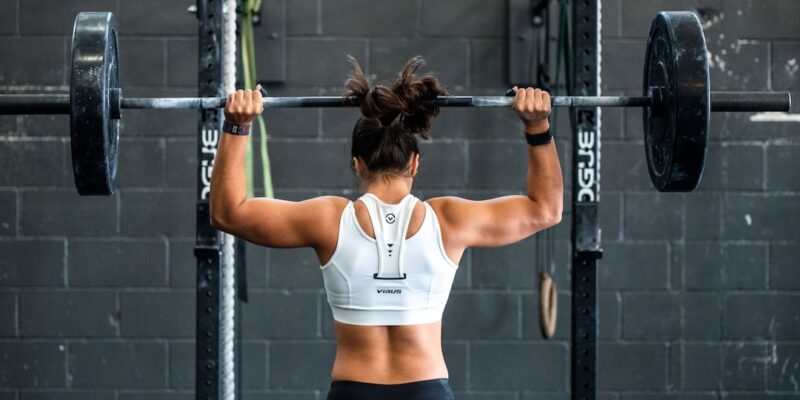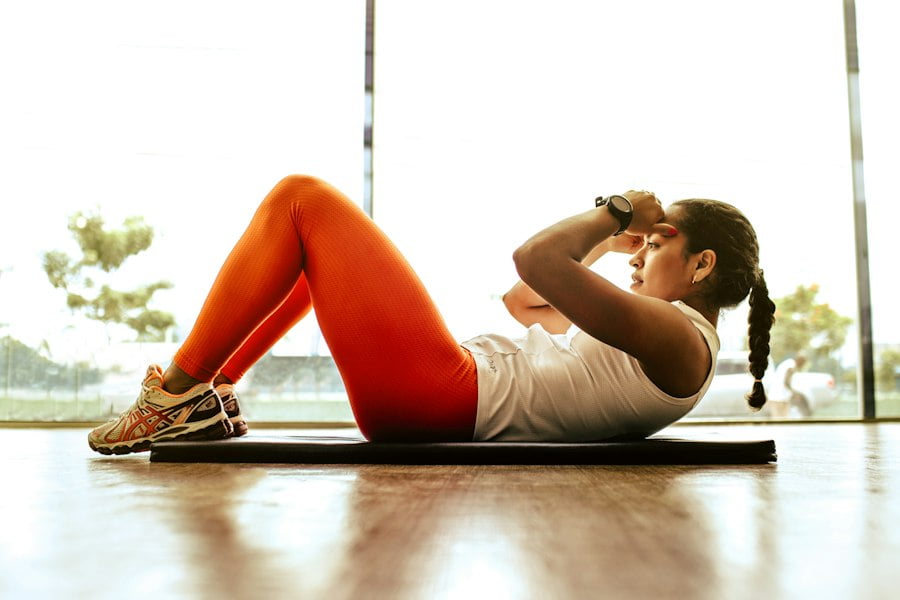
Get Fit at Home: Essential Workout Equipment for Your Home Gym
Working out at home has become increasingly popular in recent years, and for good reason. There are numerous advantages to exercising in the comfort of your own home, including convenience, cost-effectiveness, and privacy.
One of the biggest benefits of working out at home is the convenience factor. With a home gym, you can exercise whenever you want, without having to worry about gym hours or crowded facilities. This is especially beneficial for those with busy schedules or unpredictable work hours. You can fit in a workout before work, during your lunch break, or even late at night.
Another advantage of working out at home is the cost-effectiveness. Gym memberships can be expensive, and the costs can quickly add up over time. By investing in a home gym, you can save money in the long run. While there may be an initial investment to purchase equipment, it will pay for itself over time as you no longer have to pay monthly fees. Additionally, you won’t have to spend money on transportation to and from the gym.
Privacy is another key benefit of working out at home. Some people may feel self-conscious or uncomfortable exercising in front of others, especially if they are just starting their fitness journey. With a home gym, you have complete privacy and can focus solely on your workout without any distractions or judgment from others.
Key Takeaways
- Working out at home has many benefits, including convenience, cost-effectiveness, and privacy.
- Before creating a home gym, assess your fitness needs and goals to determine what equipment you need.
- When creating a home gym space, consider factors such as lighting, ventilation, and flooring.
- Cardiovascular equipment options for a home gym include treadmills, stationary bikes, and ellipticals.
- Strength and resistance training equipment options for a home gym include dumbbells, resistance bands, and weight benches.
Assessing Your Fitness Needs and Goals
Before building a home gym, it’s important to assess your fitness needs and goals. This will help you determine what equipment and accessories you need to invest in.
Start by evaluating your current fitness level. Consider factors such as your cardiovascular endurance, strength, flexibility, and overall health. This will give you a baseline to work from and help you set realistic goals.
Next, think about what you want to achieve with your workouts. Do you want to lose weight, build muscle, improve your cardiovascular fitness, or increase your flexibility? Setting specific and achievable goals will help you stay motivated and track your progress.
Once you have a clear understanding of your fitness needs and goals, you can start planning your home gym accordingly. Consider the types of exercises and workouts that align with your goals. For example, if you want to focus on cardiovascular fitness, you may want to invest in a treadmill or stationary bike. If strength training is your priority, consider purchasing dumbbells or resistance bands.
Creating a Home Gym Space That Works for You
Creating a dedicated space for your home gym is essential for a successful workout routine. When designing your home gym space, there are several factors to consider.
First and foremost, assess the available space in your home. Whether it’s a spare room, a corner of your living room, or even just a small area in your bedroom, make sure you have enough room to comfortably move around and perform exercises. Clear out any clutter or unnecessary furniture to create an open and inviting space.
Lighting is another important factor to consider. Natural light is ideal, as it can boost mood and energy levels during workouts. If natural light is limited, invest in good quality artificial lighting that mimics natural light as closely as possible.
Proper ventilation is also crucial for a comfortable workout environment. Make sure the space has adequate airflow to prevent overheating and ensure fresh air circulation. Consider opening windows or using fans to improve ventilation.
Lastly, create a motivating and inspiring atmosphere in your home gym space. Hang up motivational posters or artwork, play upbeat music, and keep the area clean and organized. This will help create a positive mindset and make your workouts more enjoyable.
Cardiovascular Equipment for Your Home Gym
| Equipment Type | Benefits | Price Range |
|---|---|---|
| Treadmill | Great for running or walking indoors, adjustable speed and incline, tracks progress with built-in metrics | 500-3,000 |
| Elliptical | Low-impact workout, works both upper and lower body, adjustable resistance and incline, tracks progress with built-in metrics | 300-2,000 |
| Stationary Bike | Low-impact workout, adjustable resistance, great for cardio and leg strength, tracks progress with built-in metrics | 200-1,500 |
| Rowing Machine | Full-body workout, low-impact, adjustable resistance, great for cardio and strength training, tracks progress with built-in metrics | 300-1,500 |
Cardiovascular exercise is an important component of any fitness routine, as it helps improve heart health, burn calories, and increase endurance. There are several types of cardiovascular equipment available for home gyms, each with its own benefits and considerations.
Treadmills are a popular choice for home gyms, as they allow you to walk, jog, or run indoors. Look for a treadmill with adjustable speed and incline settings to challenge yourself and vary your workouts. Consider the size and weight of the treadmill, as well as its noise level, especially if you live in an apartment or have limited space.
Stationary bikes are another great option for cardiovascular exercise. They provide a low-impact workout that is easy on the joints, making them suitable for people of all fitness levels. Look for a stationary bike with adjustable resistance levels and a comfortable seat. Consider whether you prefer an upright bike or a recumbent bike, depending on your personal preference and any specific physical limitations.
Ellipticals are a versatile piece of equipment that provide a full-body workout. They simulate the motion of walking or running without putting excessive stress on the joints. Look for an elliptical with adjustable resistance levels and stride length to accommodate different fitness levels and body types.
When choosing cardiovascular equipment for your home gym, consider your fitness goals and budget. If you’re just starting out or have limited space, a compact and budget-friendly option may be more suitable. However, if you’re serious about your fitness goals and have the space and budget, investing in higher-end equipment with more features and durability may be worth it in the long run.
Strength and Resistance Training Equipment for Your Home Gym
Strength training is an essential component of any well-rounded fitness routine. It helps build muscle, increase bone density, improve posture, and boost metabolism. There are several types of strength and resistance training equipment available for home gyms, each with its own benefits and considerations.
Dumbbells are a versatile and cost-effective option for strength training at home. They come in various weights, allowing you to gradually increase the resistance as you get stronger. Look for dumbbells with a comfortable grip and a durable construction. Consider whether you prefer adjustable dumbbells, which allow you to change the weight plates, or fixed dumbbells, which have a set weight.
Resistance bands are another popular choice for home gyms. They are lightweight, portable, and can be used for a wide range of exercises targeting different muscle groups. Look for resistance bands with different levels of resistance to accommodate your fitness level and goals. Consider whether you prefer loop bands, which are circular and can be wrapped around different body parts, or tube bands, which have handles for easier grip.
Weight machines are a more advanced option for strength training at home. They provide a guided range of motion and target specific muscle groups. Look for weight machines that offer a variety of exercises and adjustable resistance levels. Consider the size and weight of the machine, as well as its stability and durability.
When choosing strength and resistance training equipment for your home gym, consider your fitness goals and budget. If you’re just starting out or have limited space, a set of dumbbells or resistance bands may be sufficient. However, if you’re serious about building muscle and have the space and budget, investing in a weight machine or a combination of different equipment may be more suitable.
Yoga and Pilates Equipment for Your Home Gym

Yoga and Pilates are popular forms of exercise that focus on flexibility, core strength, balance, and mind-body connection. There are several types of yoga and Pilates equipment available for home gyms, each with its own benefits and considerations.
Yoga mats are an essential piece of equipment for practicing yoga or Pilates at home. They provide cushioning and support for your body during floor exercises and help prevent slipping. Look for a yoga mat that is thick enough to provide adequate cushioning but not too thick that it compromises stability. Consider the material of the mat, as well as its size and weight for easy storage and transportation.
Yoga blocks are useful props that help with balance, flexibility, and proper alignment. They can be used to modify poses and make them more accessible, especially for beginners or those with limited flexibility. Look for yoga blocks that are lightweight, durable, and provide enough support. Consider the size and shape of the blocks, as well as their density and grip.
Yoga straps are another helpful prop for stretching and improving flexibility. They can be used to deepen stretches, extend reach, and assist with challenging poses. Look for yoga straps that are adjustable in length and made of durable material. Consider the width and texture of the strap for a comfortable grip.
When choosing yoga and Pilates equipment for your home gym, consider your fitness goals and budget. If you’re just starting out or have limited space, a yoga mat may be sufficient. However, if you’re serious about your practice and have the space and budget, investing in additional props such as yoga blocks and straps can enhance your workouts.
Accessories to Enhance Your Home Workouts
In addition to equipment, there are several accessories that can enhance your home workouts and make them more effective and enjoyable.
Fitness trackers are popular accessories that help monitor your progress and keep you motivated. They can track metrics such as steps taken, calories burned, heart rate, sleep quality, and more. Look for a fitness tracker that suits your needs and preferences. Consider whether you prefer a wristband style tracker or a clip-on tracker, as well as the features and compatibility with other devices.
Foam rollers are great tools for self-myofascial release, which helps relieve muscle tension and improve flexibility. They can be used before or after workouts to warm up muscles or aid in recovery. Look for foam rollers that are firm but not too hard or soft. Consider the size and texture of the roller for optimal comfort and effectiveness.
Exercise balls, also known as stability balls or Swiss balls, are versatile accessories that can be used for a variety of exercises targeting different muscle groups. They help improve balance, stability, and core strength. Look for an exercise ball that is the right size for your height and weight. Consider the material and durability of the ball, as well as its stability and grip.
When choosing accessories for your home gym, consider your fitness goals and budget. If you’re just starting out or have limited space, a fitness tracker or foam roller may be sufficient. However, if you’re serious about your workouts and have the space and budget, investing in additional accessories such as exercise balls or resistance bands can add variety and challenge to your routine.
Choosing the Right Workout Equipment for Your Budget
Building a home gym doesn’t have to break the bank. With careful planning and consideration, you can create a functional and effective workout space on a budget.
One way to save money is by buying used equipment. Many people sell their lightly used exercise equipment at a fraction of the original price. Look for local classified ads, online marketplaces, or garage sales in your area. Make sure to inspect the equipment thoroughly before purchasing to ensure it’s in good condition.
Another cost-effective option is to opt for multi-functional equipment. Instead of buying separate machines for different exercises, look for equipment that can be adjusted or modified to target different muscle groups. For example, adjustable dumbbells or resistance bands can provide a wide range of resistance levels and exercises.
Consider purchasing equipment in stages rather than all at once. Start with the essentials and gradually add more equipment as your budget allows. This will help spread out the costs and allow you to prioritize the equipment that aligns with your fitness goals.
While it’s important to stick to your budget, it’s also crucial to invest in quality equipment that will last. Cheaper equipment may be tempting, but it may not be as durable or effective in the long run. Look for reputable brands and read reviews before making a purchase. Consider the warranty and customer support offered by the manufacturer.
Maintaining and Caring for Your Home Gym Equipment
Proper maintenance and care are essential to ensure the longevity and effectiveness of your home gym equipment. By following a few simple steps, you can keep your equipment in good condition and prevent unnecessary wear and tear.
Regular cleaning is important to remove dirt, sweat, and bacteria from your equipment. Wipe down surfaces with a clean cloth or disinfectant spray after each use. Pay special attention to areas that come into contact with your skin, such as handles or seats. If applicable, follow the manufacturer’s instructions for cleaning and maintenance.
Lubricating moving parts is crucial to prevent friction and ensure smooth operation. Check the user manual or contact the manufacturer for specific instructions on how to lubricate your equipment. Use a lubricant that is recommended by the manufacturer and avoid using any harsh chemicals or oils that may damage the equipment.
Storing your equipment properly is also important to prevent damage and maximize space. If possible, keep your equipment in a dedicated storage area or rack. Make sure it’s protected from moisture, extreme temperatures, and direct sunlight. If you have limited space, consider investing in collapsible or foldable equipment that can be easily stored away when not in use.
Regularly inspect your equipment for any signs of wear or damage. Check for loose bolts or screws, frayed cables or straps, worn-out padding or grips, or any other issues that may compromise safety or functionality. If you notice any problems, contact the manufacturer for assistance or consider getting it repaired by a professional.
By taking care of your home gym equipment, you can ensure its longevity and effectiveness. Regular maintenance will not only save you money in the long run but also provide a safe and enjoyable workout experience.
Building a Successful Home Workout Routine
Building a home gym is a great investment in your health and fitness. By working out at home, you can enjoy the convenience, cost-effectiveness, and privacy that it offers.
Assessing your fitness needs and goals is crucial before building a home gym. This will help you determine the equipment and accessories that are right for you. Creating a dedicated space that is functional and motivating is also important for a successful workout routine.
When choosing equipment and accessories, consider your fitness goals and budget. There are plenty of options available for every budget and fitness level. Remember to invest in quality equipment that will last, as well as maintain and care for your equipment regularly.
Building a successful home workout routine takes time and effort, but the benefits are well worth it. With the right equipment, motivation, and consistency, you can achieve your fitness goals from the comfort of your own home. So take action today and start building your own home gym!
FAQs
What is home workout equipment?
Home workout equipment refers to any type of fitness equipment that can be used in the comfort of your own home to help you exercise and stay fit. This can include items such as dumbbells, resistance bands, yoga mats, exercise balls, and cardio machines like treadmills or stationary bikes.
Why should I consider using home workout equipment?
Using home workout equipment can be a convenient and cost-effective way to stay in shape. It allows you to exercise on your own schedule, without having to worry about gym memberships or commuting to a fitness center. Additionally, having equipment at home can help you stay motivated and consistent with your workouts.
What types of home workout equipment are available?
There are many different types of home workout equipment available, ranging from simple items like resistance bands and jump ropes to more complex machines like treadmills and ellipticals. Some popular options include dumbbells, kettlebells, yoga mats, exercise balls, and foam rollers.
How do I choose the right home workout equipment for me?
When choosing home workout equipment, it’s important to consider your fitness goals, budget, and available space. Think about what types of exercises you enjoy and what equipment will help you achieve your desired results. It’s also a good idea to read reviews and compare prices before making a purchase.
Can I get a good workout with just home workout equipment?
Yes, you can definitely get a good workout with just home workout equipment. Many people have successfully achieved their fitness goals using only equipment they have at home. The key is to choose equipment that allows you to perform a variety of exercises and to create a workout routine that challenges you and targets all major muscle groups.


















